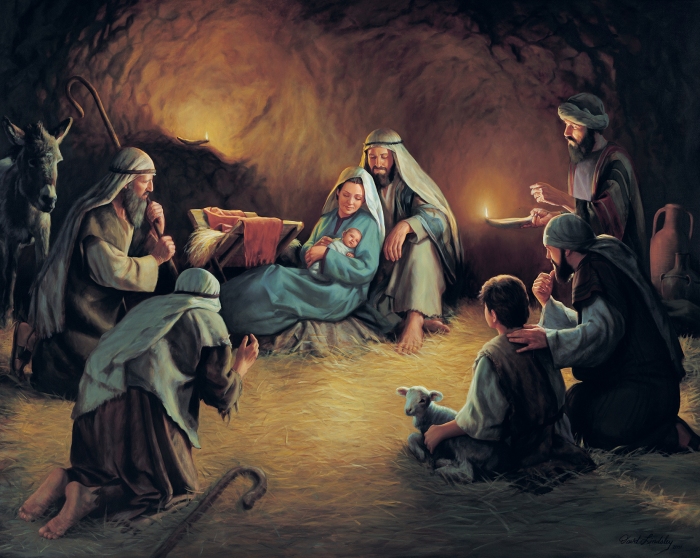
Today we begin the Christmas season. Yes, this is just the beginning of Christmas in the liturgical calendar of the church. All that we have done in the past four weeks, in what we call the Advent season, are just preparations for Christmas.
For many of us, this maybe the climax of a long Christmas celebration which may have began as early as September. Many of us are perhaps exhausted, sleepy and have spent all our money from all the food, drinks and celebration of the past weeks. Despite these, the church invites us, all Christians, to celebrate the deeper mystery of Christmas. The incarnation of Jesus, the main event of Christmas, after all, is not dependent on how much money, material things, food, drinks, external decorations we have now but how much are we open, humble and alive to the promptings of the profound spiritual reality of the coming of Jesus in our lives.
The gospel on this Christmas day, is from the opening of John’s Gospel. There is no mention of Bethlehem, of Mary, of shepherds, or the stable and the manger. Nevertheless, this is a magnificent passage which delves into the deeper meaning of Christmas.
The most quoted text in the gospel is the words:
“The Word became flesh and made his dwelling among us” (Jn 1:14)
Literally in Greek it reads, “the Word became flesh and pitched his tent/tabernacle among us.” These words allude to the tent of meeting (or tabernacle) that was the place of God’s presence among the people during their wandering through the desert in the Exodus (Ex 25:8-9). Now, it it not just the tent/tabernacle but Jesus is God’s presence among human beings.
He came into the world yet “his own” did not accept him (Jn 1:11). “His own” could be Jesus’ immediate kinship group (Jn 7:1-7; 19:27), or his clan or people.
He came to what was his own,
but his own people did not accept him.
Sadly, this pitiable reality has been repeated throughout history. Even if God has already come down to redeem us, yet humanity still looked for another saviour who it perceives can grant its immediate needs. This is also true today. The world has recently become attracted to saviours who promise quick fix solution to the problems of society. Their solutions, however, often involves hating, excluding, ostracising certain groups or race for the sake of the security and comfort of the majority.
Indeed, Jesus is not the typical savior that the world knows. Jesus as savior came not to solve our problems or answer all our questions or fulfill all our personal ambitions or praise all our successes but to reveal all our problems, to challenge all our certainties, to expose us to our vulnerabilities, and to lead us to His Kingdom. In Christ, God entered the world to overturn our world. And we are confused and not contented.
How beautiful the world would have been if the Messiah who had come was a superhero, who would wipe out all our enemies and get rid of all evils in this world. Then our world today is like a paradise, peaceful, prosperous and everyone is happy.
But he is not a God who came to be served but to serve. He is not a God who lord it over everyone but became the slave of all. He is not a God who is undependable but a God who is just and compassionate to all. He did not come to the world to lecture us, to scold us, to judge us. He did not come for the healthy and strong but for the sinners. He did not tolerate our sins but gave us the strength to rise above our weaknesses and sins.
He entered into our history, identified with our struggles, lived in the midst of our evil world, experienced our fears and anxieties and marveled with our dreams and aspirations. As Pope Francis, when he visited Tacloban in 2015, said: “We have a Lord who is capable of crying with us, capable of walking with us in the most difficult moments of life”. He is one of us. He is indeed Emmanuel, God who is with us!
Jesus is our true savior. Let us not be seduced by fake saviors in our world today. Let us reject all their lies and manipulations. Let us renew our loyalty to Jesus, our true savior.
Only Jesus can liberate us from our particular enslavement. Jesus entered our world to bless it and to liberate us from all form of enslavement whether oppression, hunger, homelessness, addictive habits and substances, fear, anger, resentment, hatred, or loneliness. At the same time, we are called to work together with him, to help others break the chains of their enslavements, so that, in the words of the prophet Isaiah in today’s first reading,
“All the ends of the earth will see the salvation of our God”.
A most blessed Christmas to all!
Here is the schedule of Christmas Day masses at the Baclaran Shrine (Philippine Time). All Christmas Day masses at the shrine are streamed live. Click this link to watch and listen to the Christmas Day masses at the shrine.


